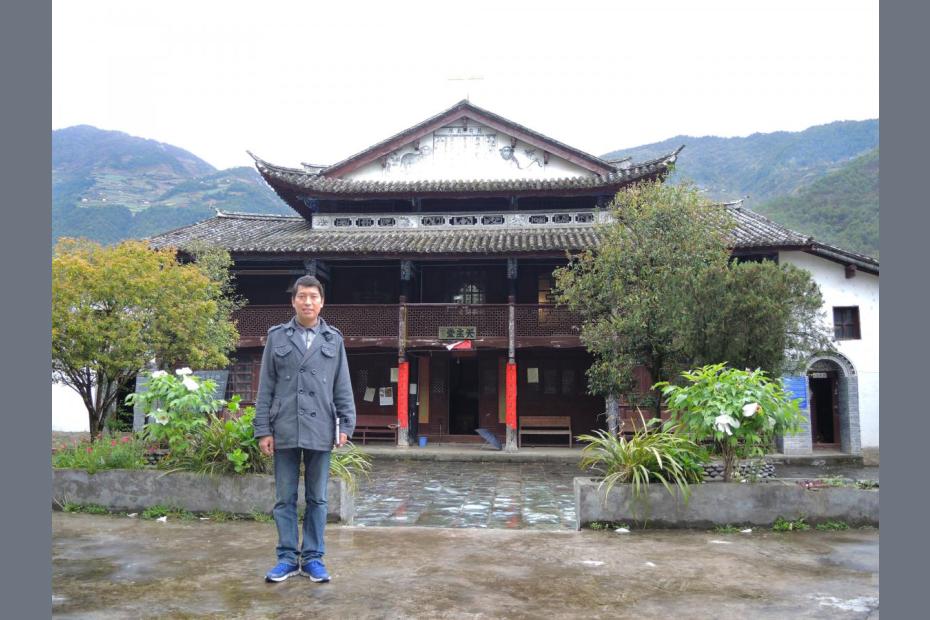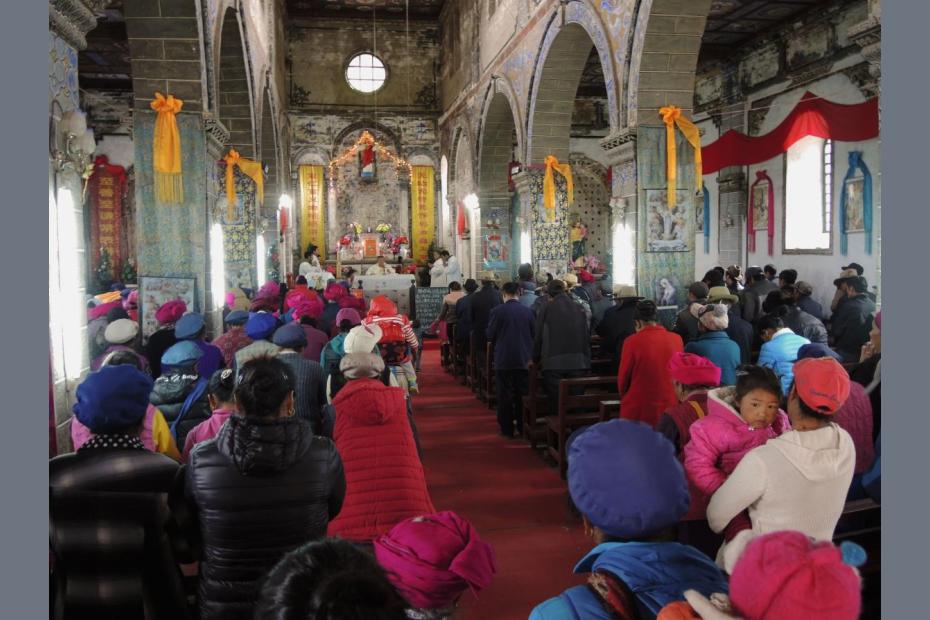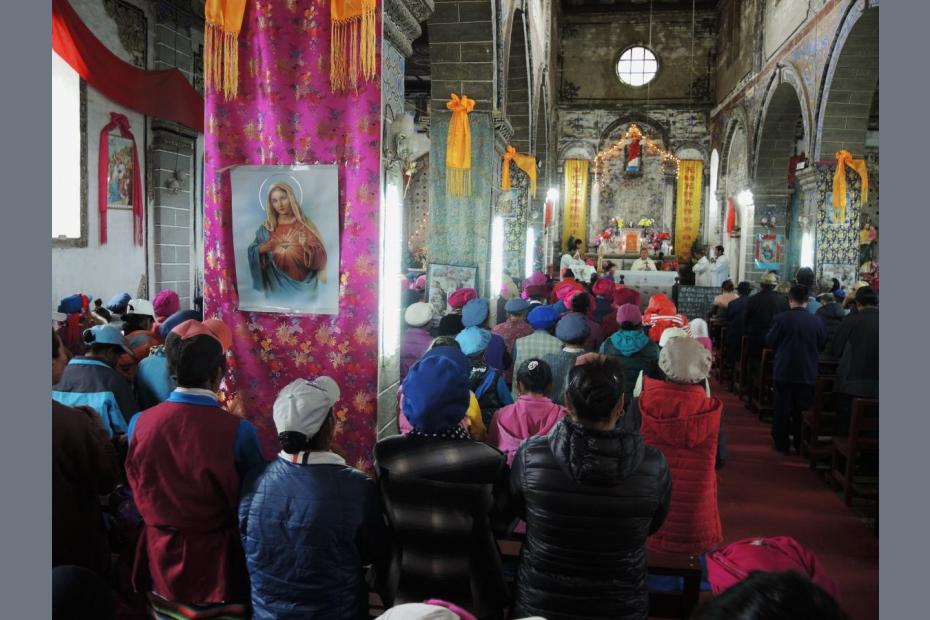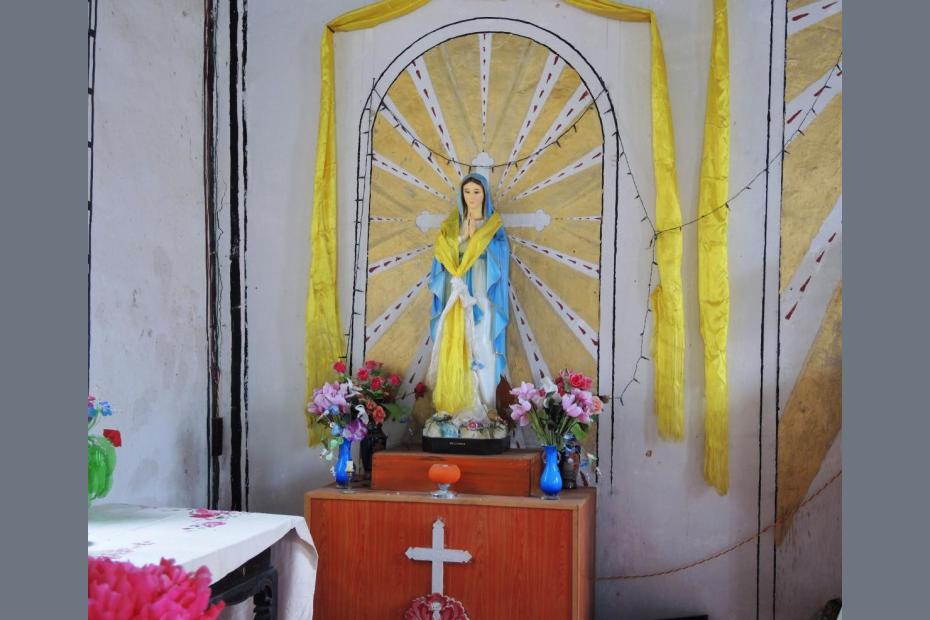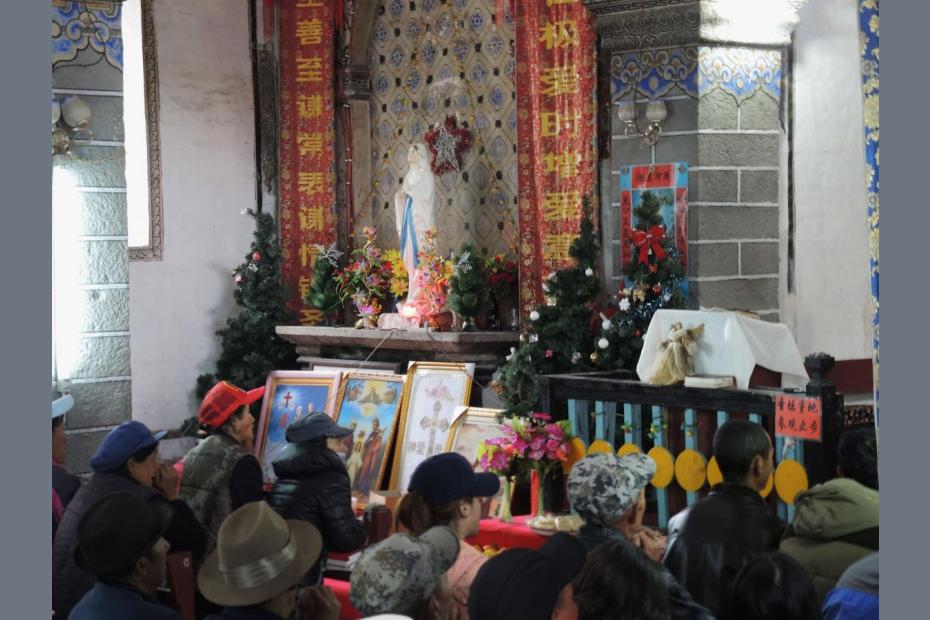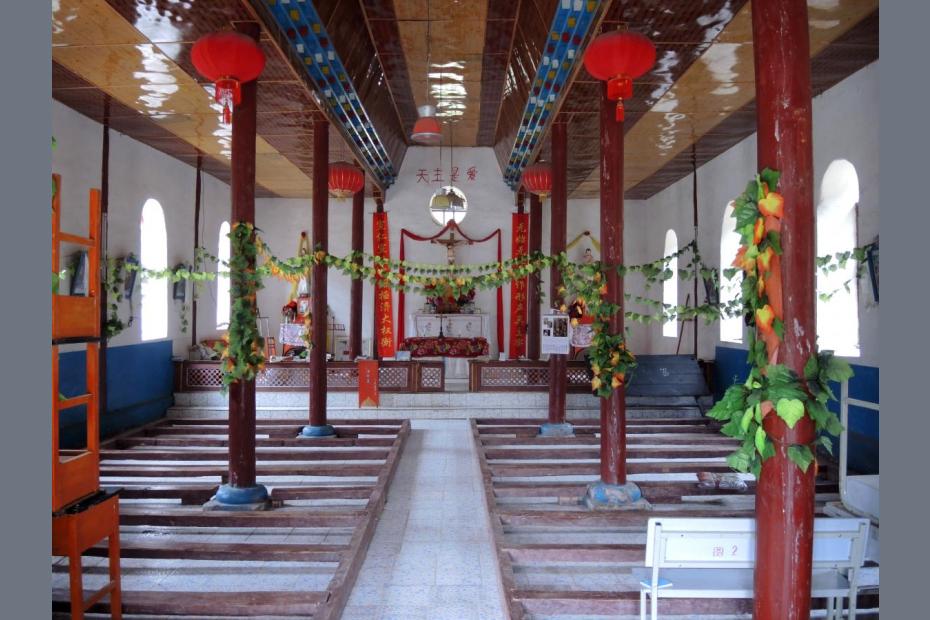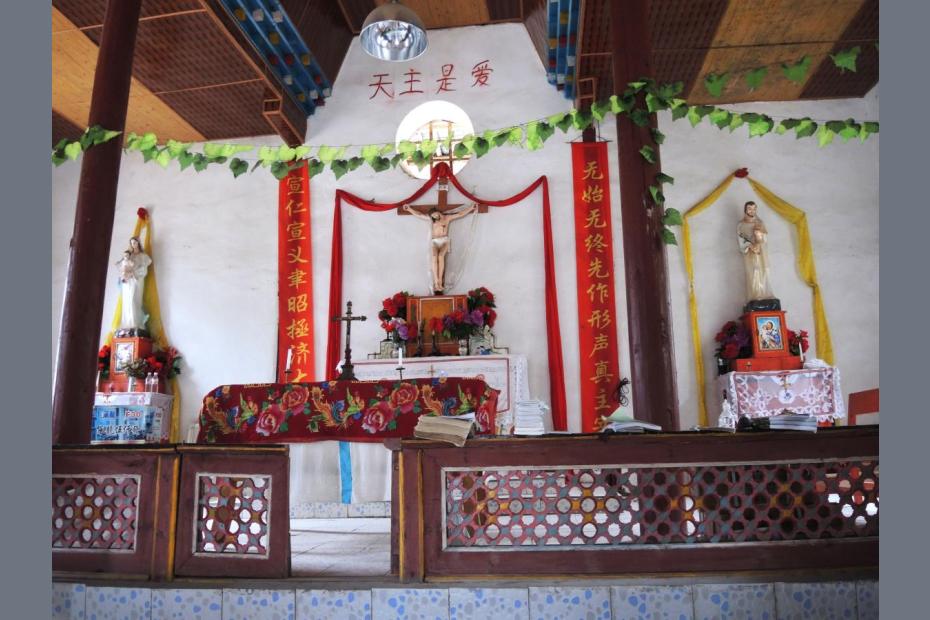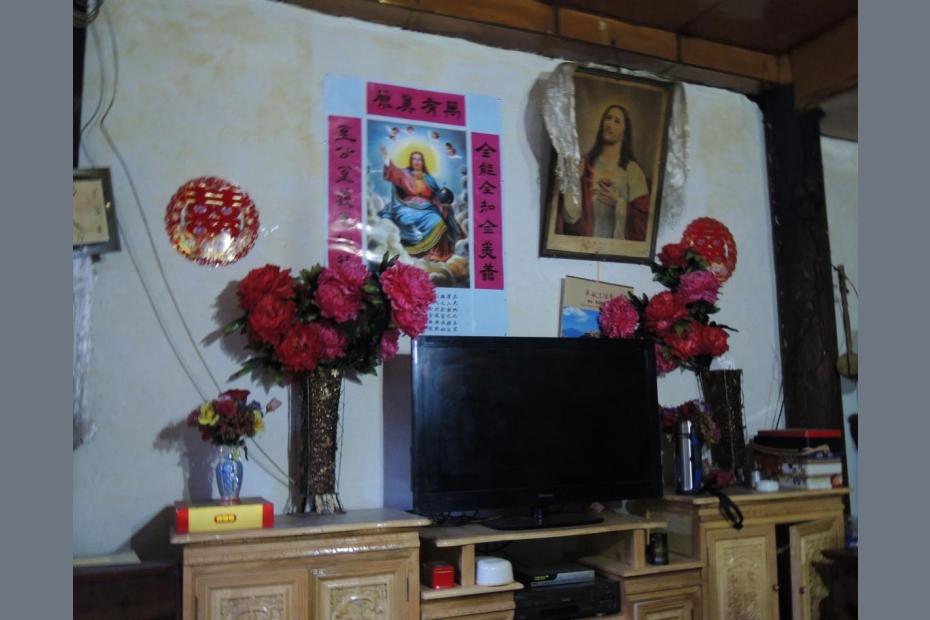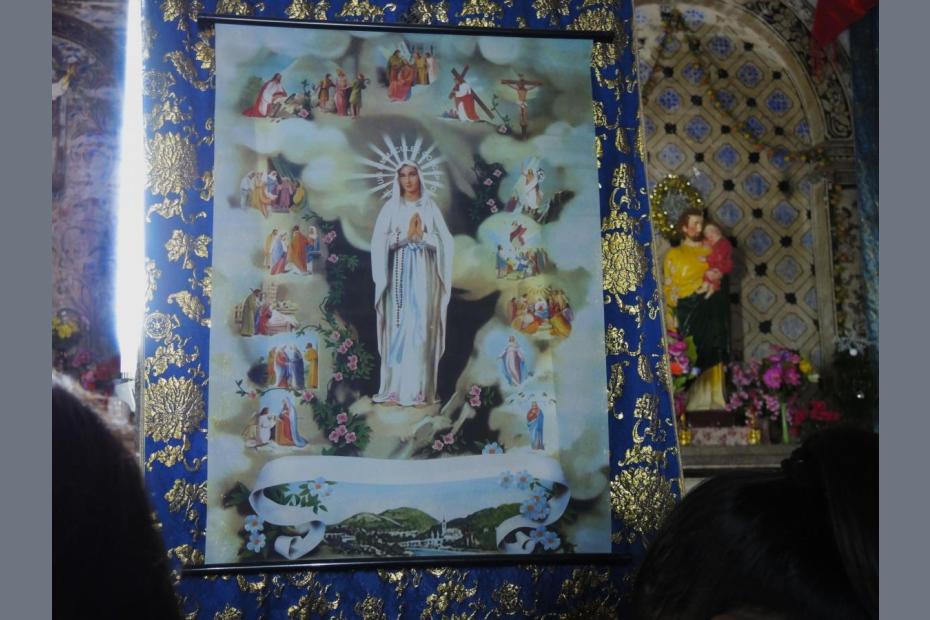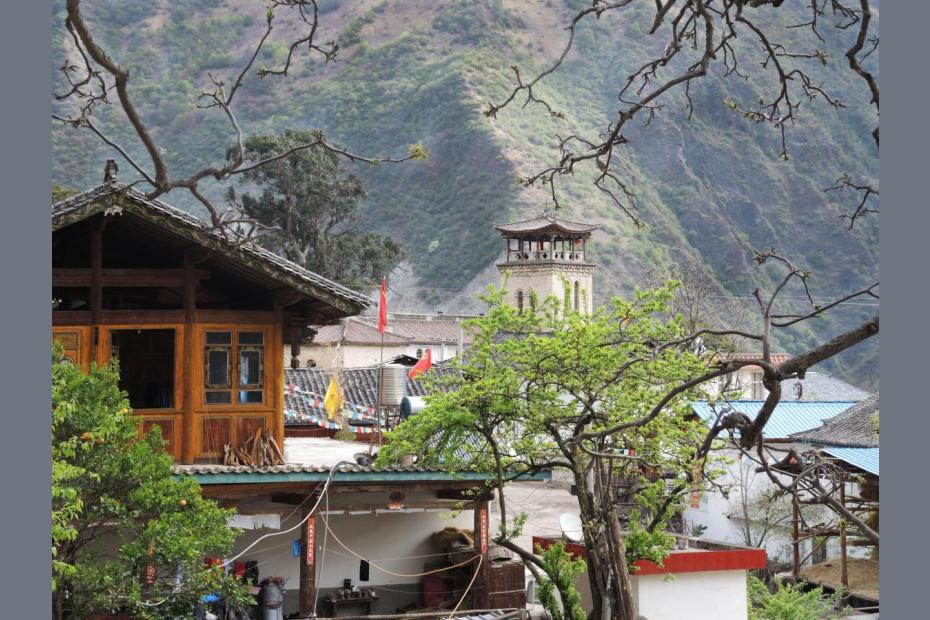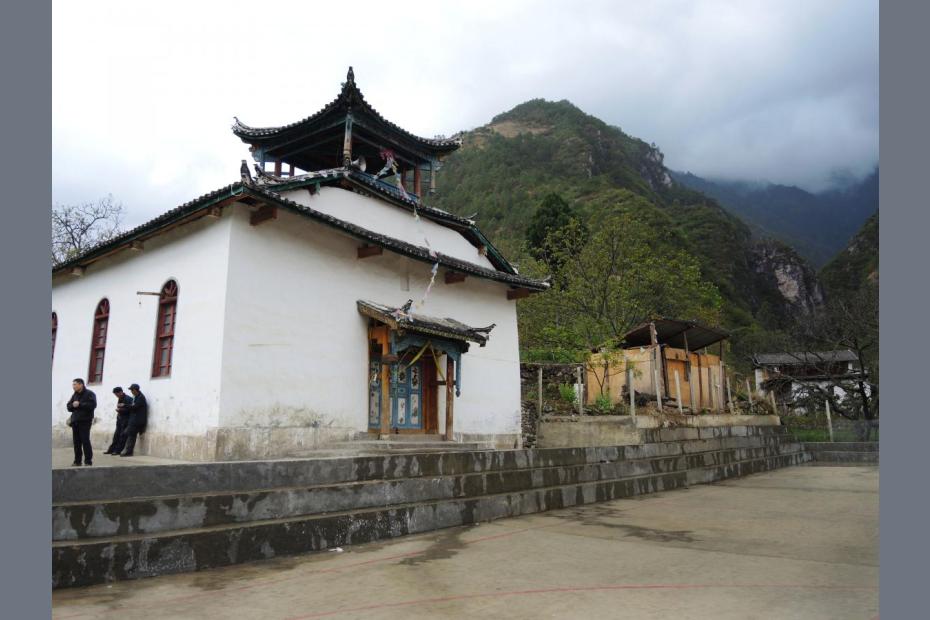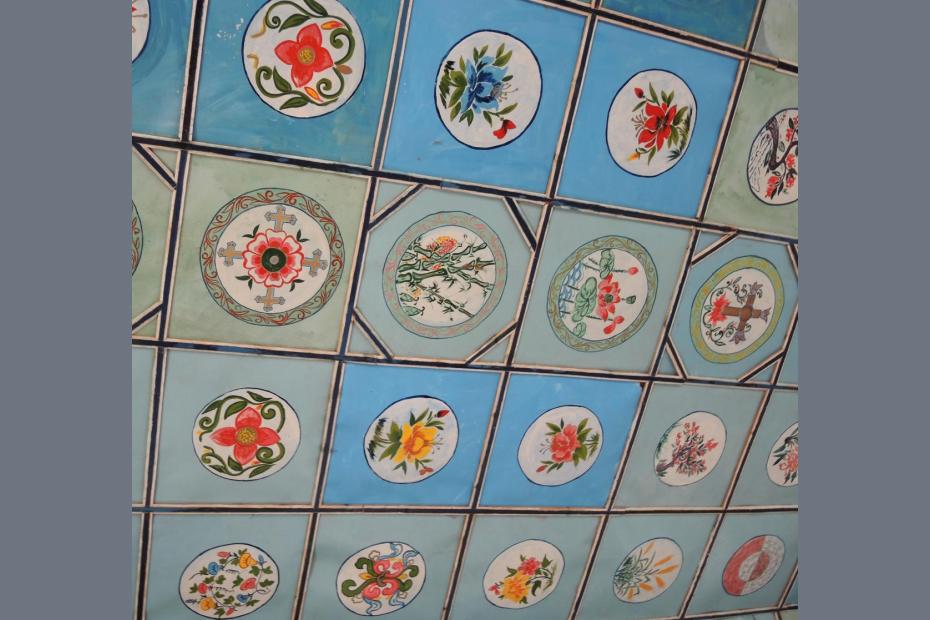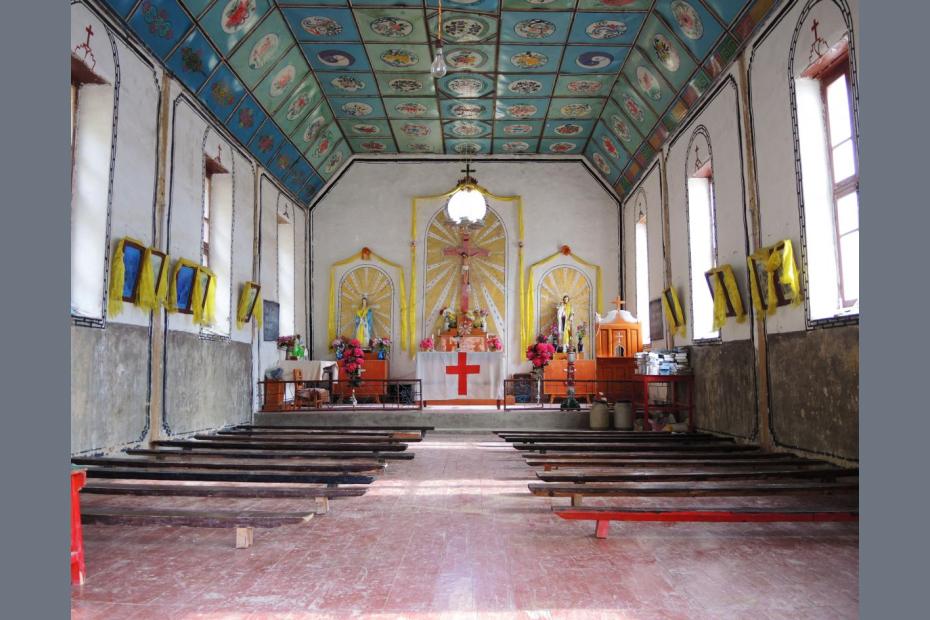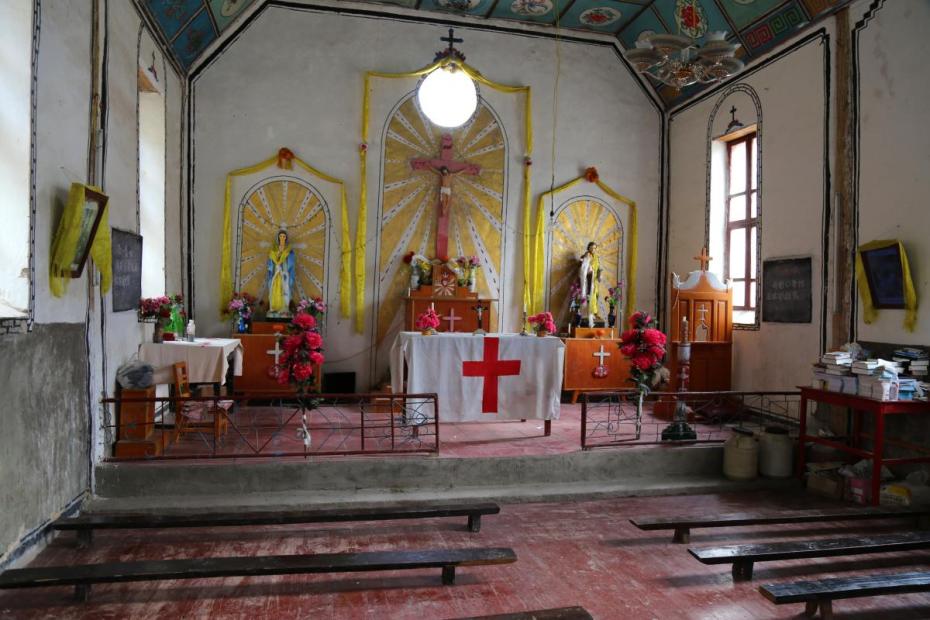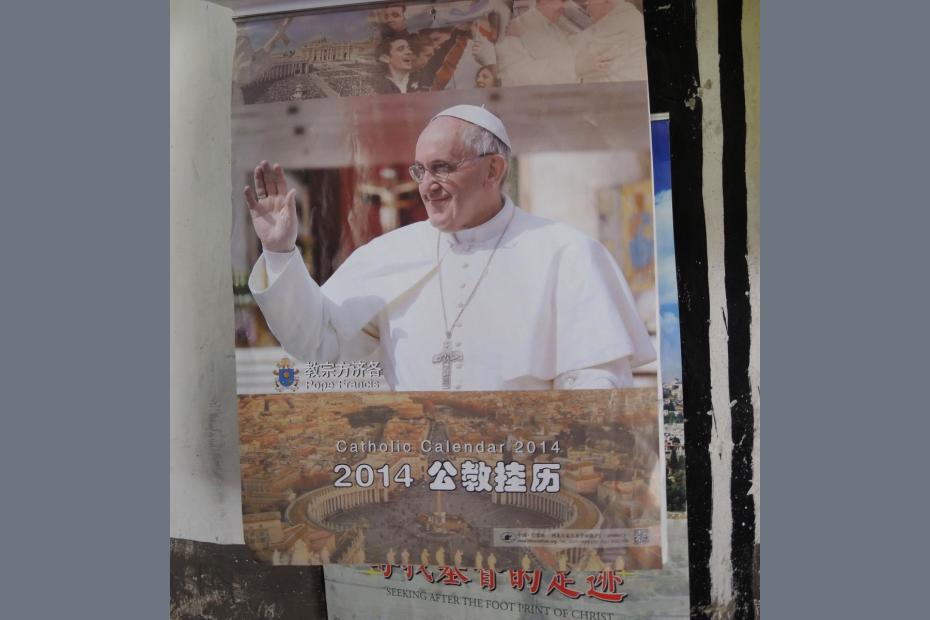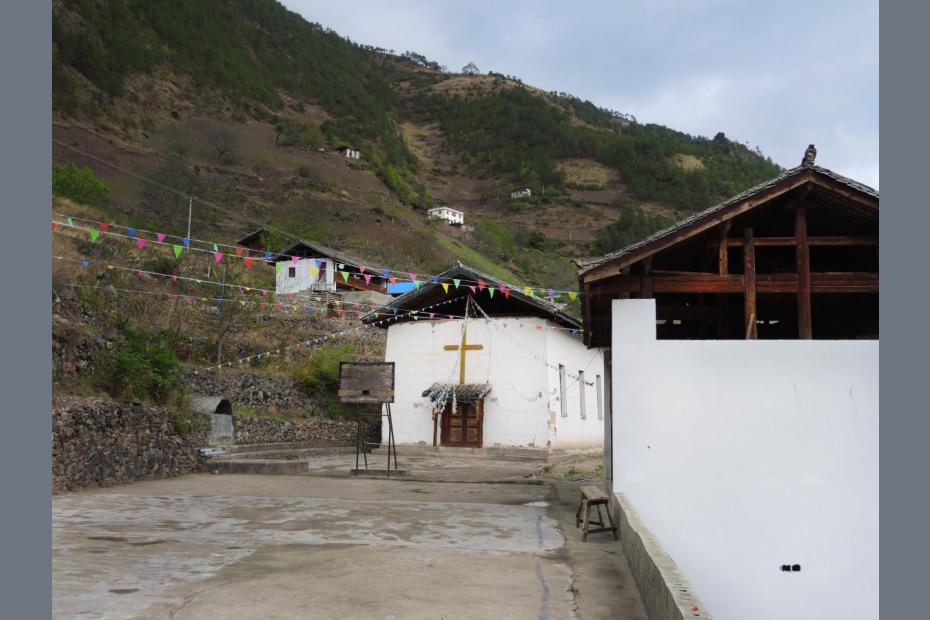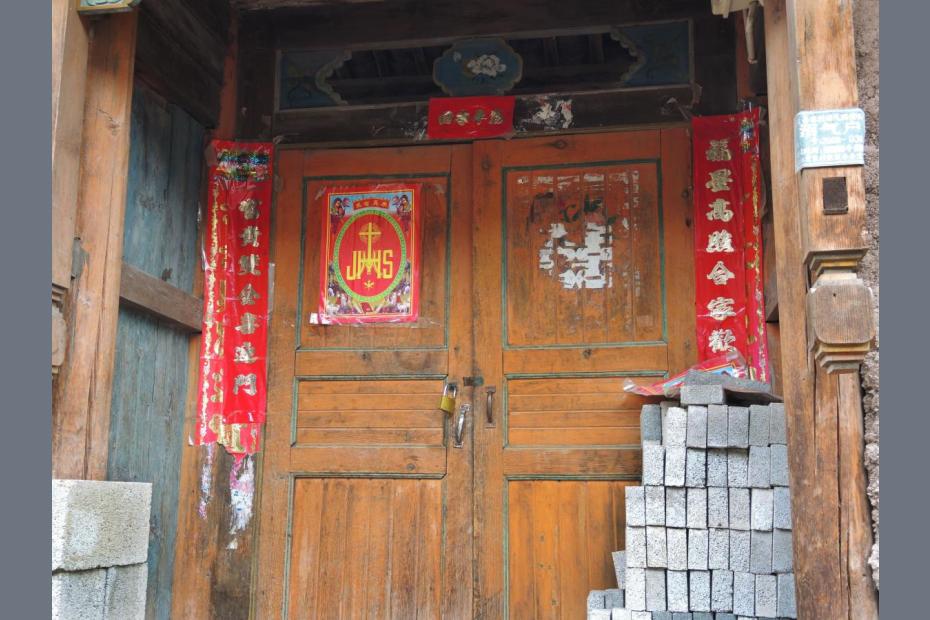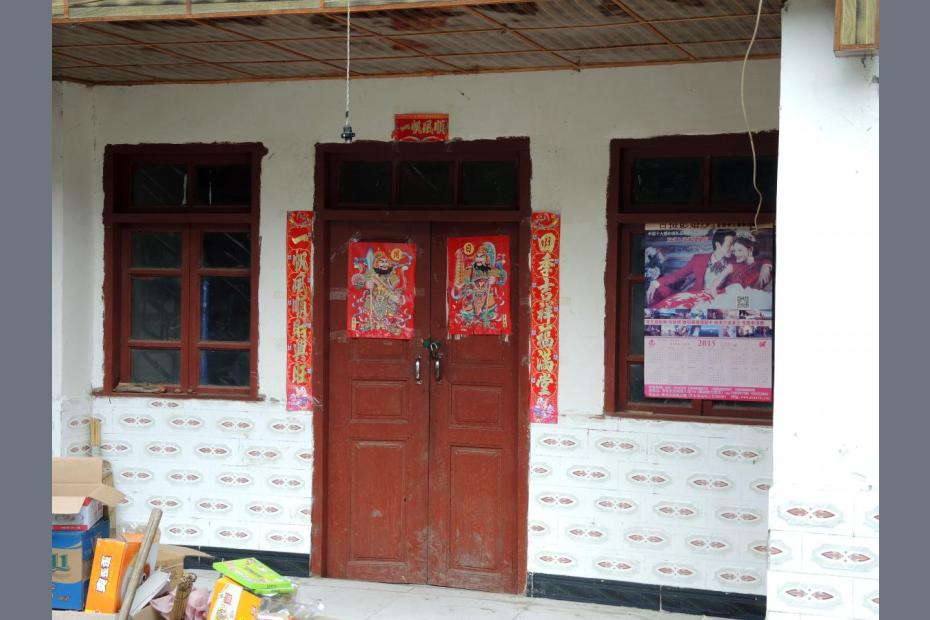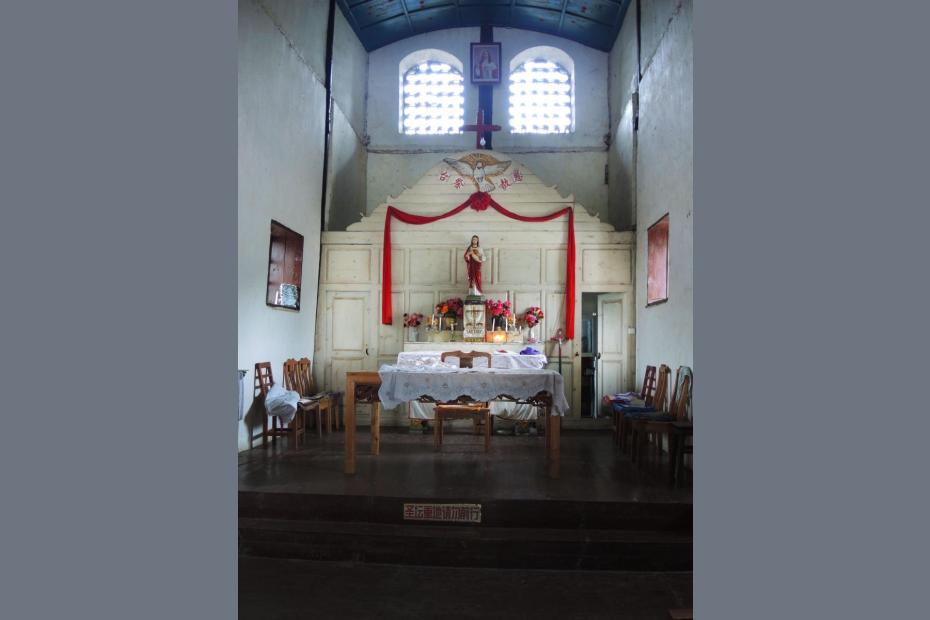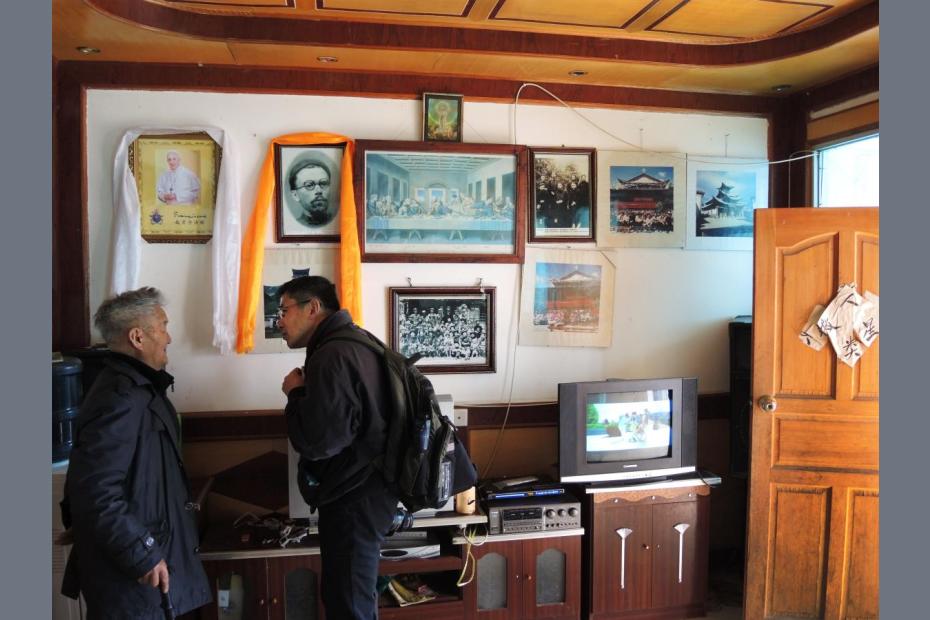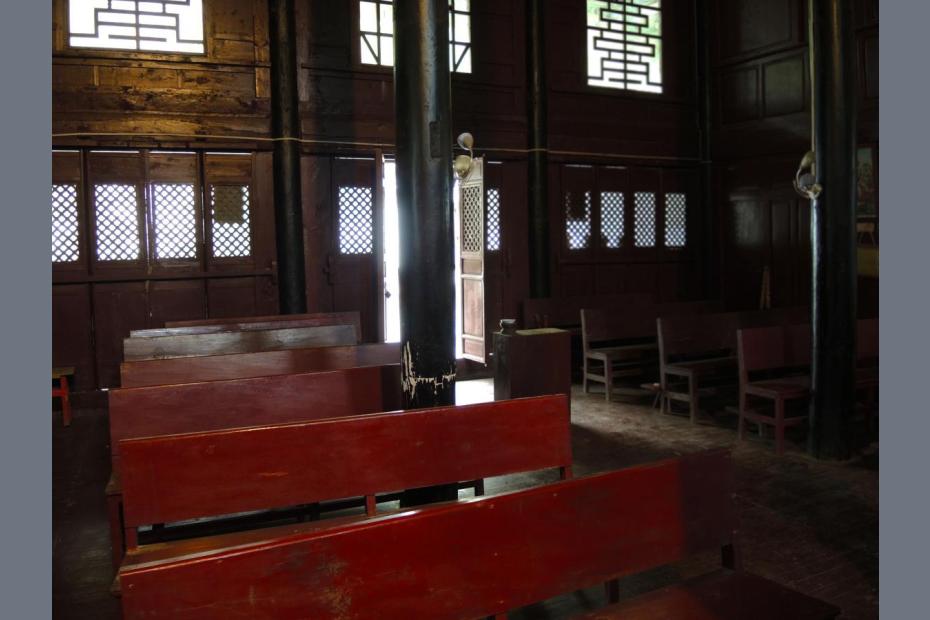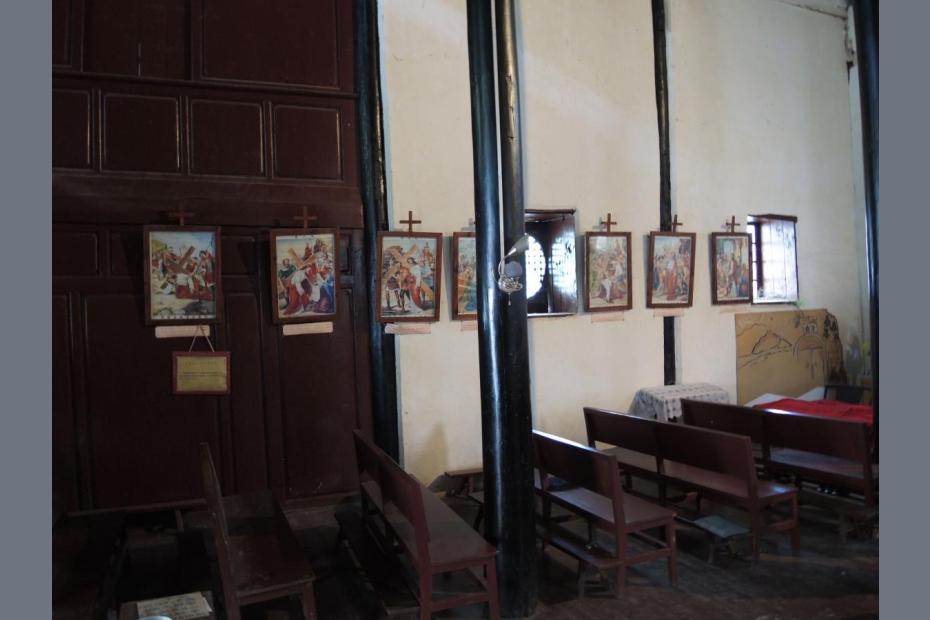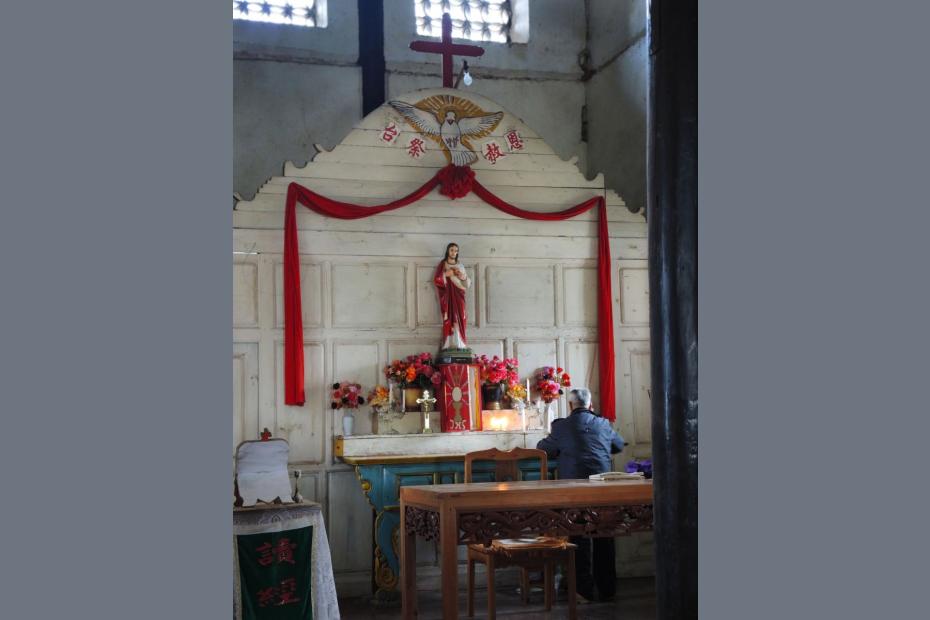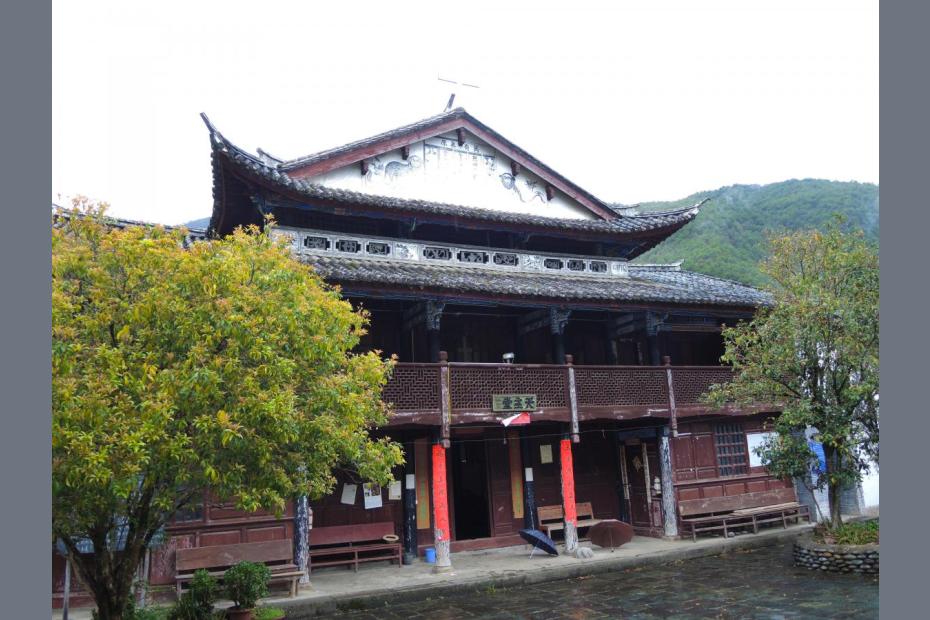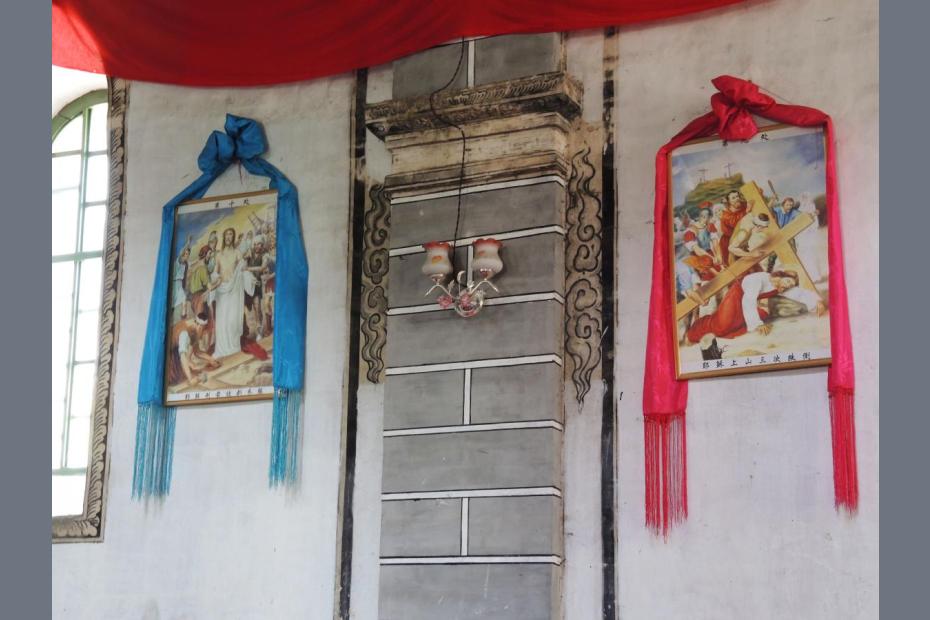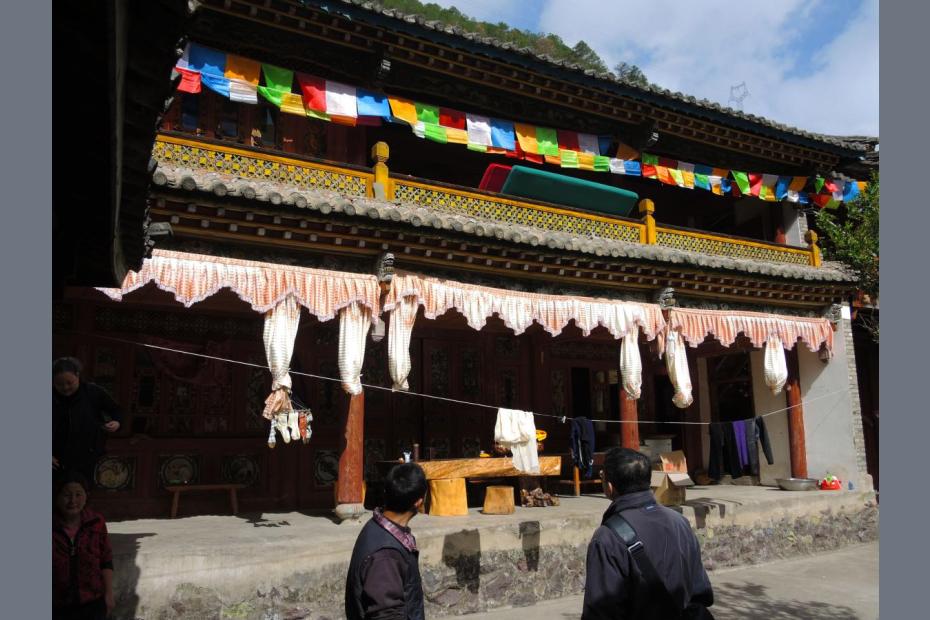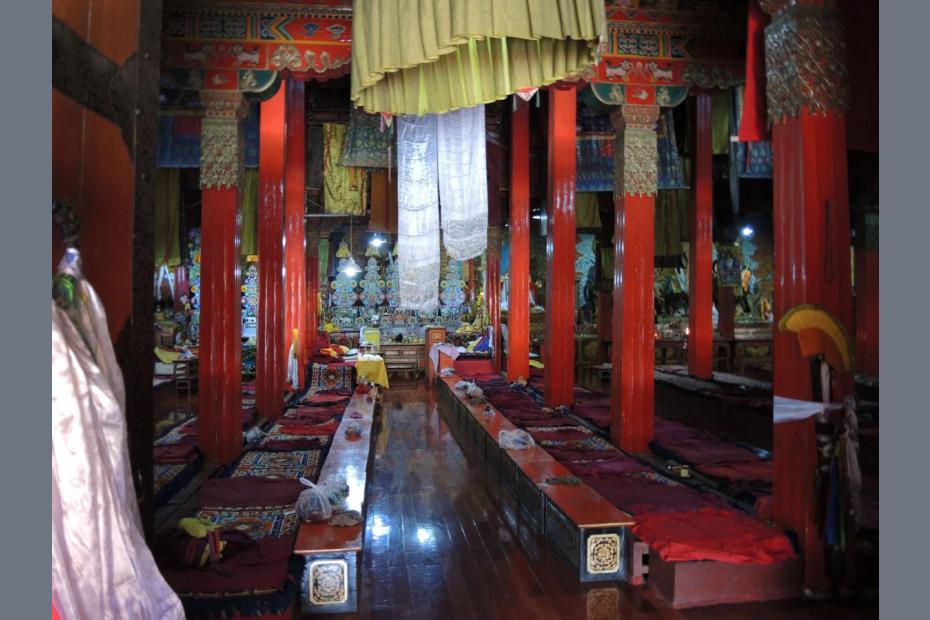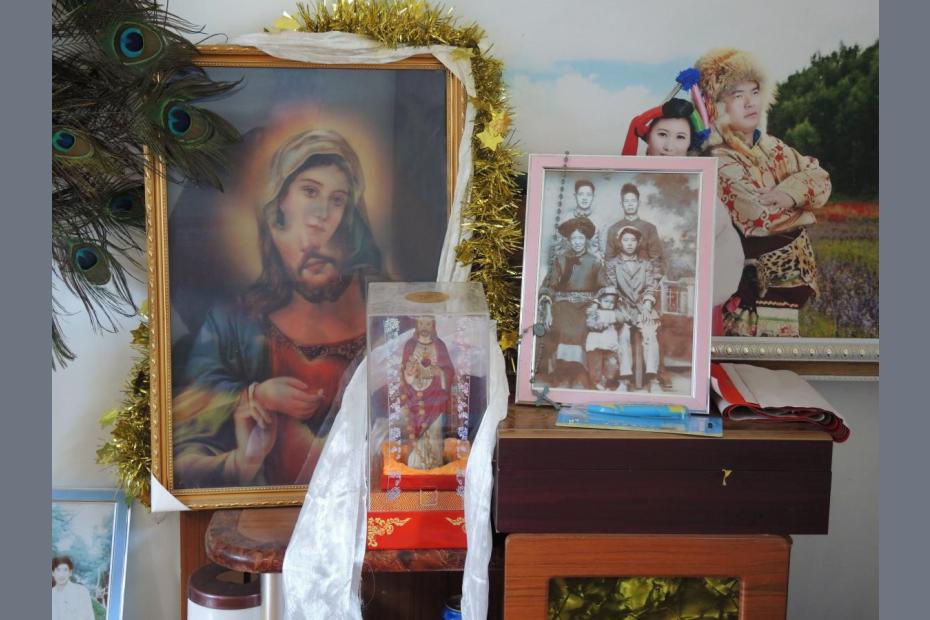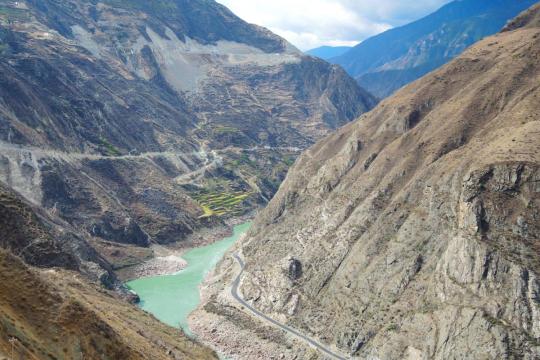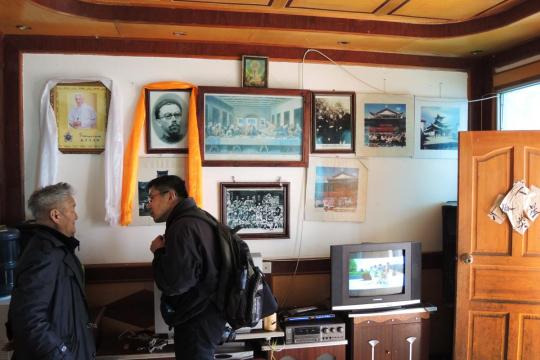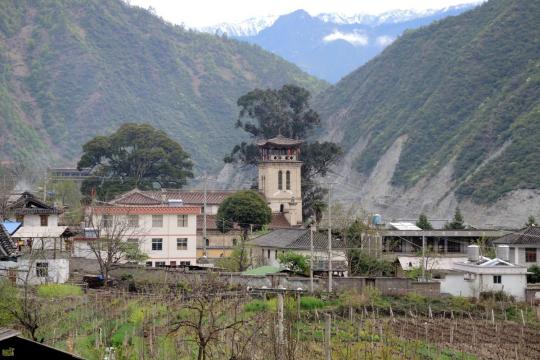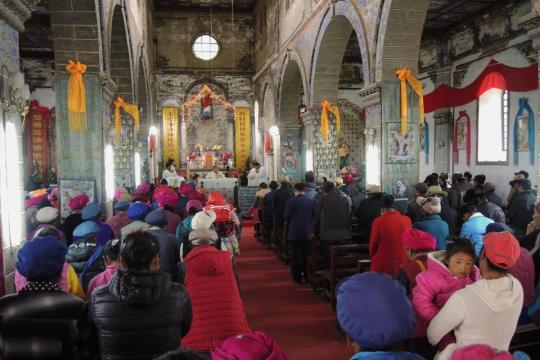The visual culture — the local churches and religious imagery — is one of the most compelling aspects of Catholic life in the valley, quite worthy of attention even alongside the very striking visual culture of Tibetan Buddhism. Catholicism in the Lancang Valley amalgamates elements of Western Catholic, Chinese and Tibetan traits, using bright colors and unusual architectural combinations. It often synthesizes Western 19th- and 20th-century pious images with elements of Chinese and Tibetan visual culture to form a rich visual mix. All of the churches Sinicize basic Western forms with decorative Chinese elements in roofs, woodwork and color schemes. None go so far as to fully copy the explosion of color, especially red and gold, that are used in nearby Buddhist lamaseries, but neither (in contrast to many of the churches in the major cities of China’s East) do they simply look like 19th-century Western buildings and decorative schemes imported wholesale.
Cizhong and Xiaoweixi churches, the oldest and largest among those in the valley, make liberal use of Tibetan and Chinese motifs, and the smaller, simpler churches at Niuren and Cigu add these as well.
Primary holy images in the churches are usually draped with white or yellow silk as a sign of respect and blessing. All Chinese would know that yellow, the color once reserved for the emperors, signifies status. It is also the color favored by the Tibetan monks. White silk speaks to purity and is also used to honor the dead, as the traditional color for mourning. Churches and banners feature a good deal of red, the color that symbolizes prosperity.
Colorful calligraphy banners, usually in red, surround many sacred images and altars, with one short banner at the top, two longer ones on the sides. Calligraphy is seen as an art form in and of itself in China, often displayed on walls as a form that harmonizes art and poetry. The words on these banners tell us something about the way Catholicism is presented in this context.
In one home, for example, a poster of the Sacred Heart seated in clouds is surrounded by the words, “Everything has its true origin, or reason for being,” at top; and “All powerful, Absolute perfection, All knowing, All capable; Ultimate justice, Fairness, Benevolence ” on the sides. At the bottom, it reads, in smaller characters, “Almighty presence, the origin of every being and thing, since time immemorial, reaching to eternity, transcending all chasms of differences. Without form or shape, this gives form to everything. No second one like it, unique.”
Above the altar at Niuren Catholic church reads "God is love." The left banner proclaims, "Spread (or Propagate) love, Spread loyalty, Overflowing salvation, Grand design." The right banner reads "Overseer of all, God's wisdom, Right order under heaven." At Xiaoweixi Catholic Church, the words above the altar are "Altar Sacrifice" and "Mercy and Forgiveness."
The literary style is semi-classical Chinese, not Western narrative. It speaks of God in philosophical, not relational terms — of a God who is highly transcendent and out of time, and to ideals that are eternal, unchanging and far above the human order. Whether peasants in the village fully grasp this classical language (in Chinese, not their native Tibetan) is open to question, but it is worth noting that most of these phrases have been added to churches since they were rebuilt, not simply inherited from the distant past.
Aside from the presence of the churches themselves, public expression of Catholicism in the valleys and towns is more restrained than that of Tibetan Buddhism. Stupas dot the roads, and prayer flags are often strung across the lands and from many houses in Cizhong. One could occasionally notice that some Catholic men wore a rosary under their shirts, but no one wore Christian signs on the outside of their clothes. On the doors of homes, only one house was seen to display a Christian symbol on the exterior, as part of the otherwise ubiquitous Chinese New Year’s banners and greetings. Inside the home, people do favor bright framed images, judging from a few homes visited and the many images brought to church at Easter to be blessed. Sacred Heart and Our Lady of Lourdes images predominate — indeed, the Sacred Heart, rather than the crucifix, is over the altar, and on posters in people’s homes.
